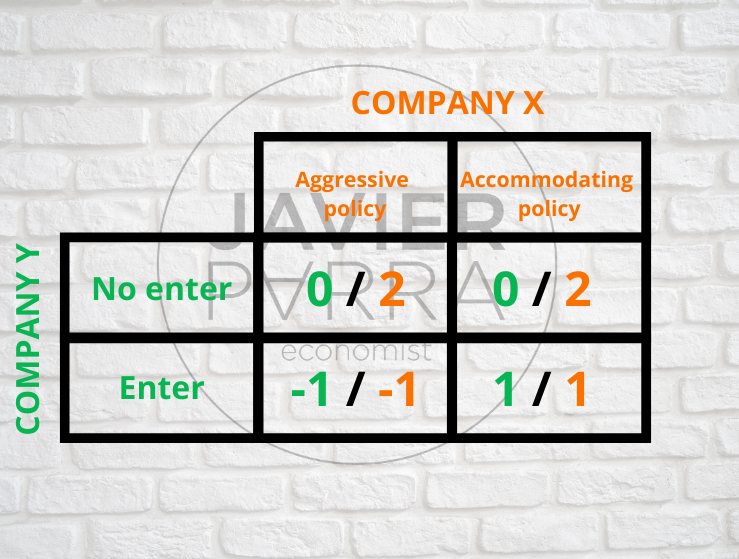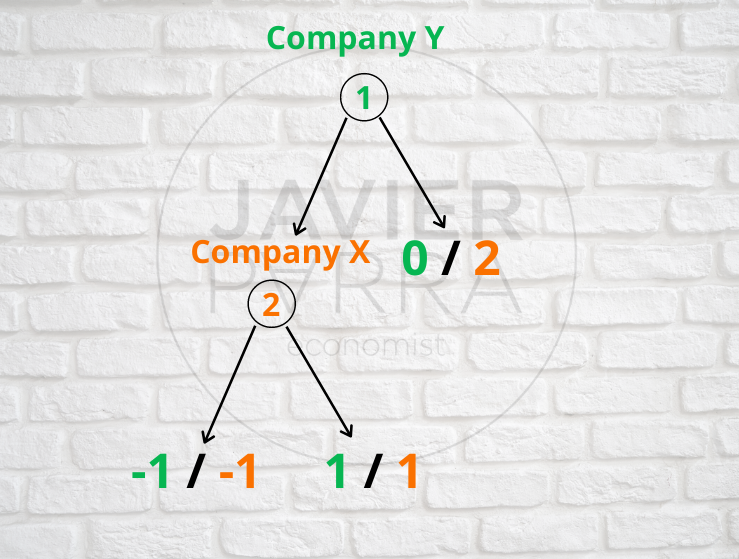Game theory reasoning is very present in economic theory and is widely used in other social sciences, facilitating the understanding of economic, social, political, biological, etc., phenomena. The objective pursued by this theory is to enable or facilitate our understanding of situations in which decision-makers interact. One of its main proponents was Kenneth J. Arrow, winner of the 1972 Nobel Prize in Economics.
We can start from the most basic point of what we know as a game in our everyday life (defining it as a competitive activity in which players play against each other under a set of rules) may seem simple enough. Still, the scope of the game theory goes much further, so we must abandon this everyday vision and focus on how this theory allows us to understand economic, social, political, biological, etc., phenomena.
What is the game theory?
Game theory is defined as a collection of models where models are an abstraction that we use to understand our observations and experiences.
By saying that this abstraction allows us to understand our observations and experiences, we mean that it involves our own perception of the relationships between different situations (isolating those principles that apply to a set of problems) to fit our thoughts into the new situations we encounter.
Returning then to the definition of a game (applying it to game theory in economics), we can say that it is a strategic situation, i.e. an interaction, where the outcome that is obtained depends not only on the decisions you make but also on the decisions other players make and/or the rules imposed by the game itself. The most practical example we have in-game economics (based on game theory) is the market.
Not only is there this example of the applications of game theory, but we have many others such as:
- Companies competing for business
- Political candidates competing for votes
- Jury members deciding on a verdict
- Animals fighting for prey
- Bidders competing in an auction
- Siblings behaving towards each other and their evolution
- Experts competing to provide correct diagnoses
- Many of the everyday decisions we make
We can continue with many examples where we see game theory involved.
A practical example of game theory
Knowing game theory can help us understand real situations, which would seem contradictory if we do not know the game theory. Let’s look at an example:
- Case 1: Let us imagine a company X with no competitors, so it obtains profits equal to 2. This company X must establish the policy to follow in the face of the possibility of new competitors (other companies that want to enter its market), either by having an aggressive policy that attacks or fights against these companies or by accommodating them.
- Case 2: A firm Y is deciding whether or not to enter firm X‘s market.
For decision making in this type of case (known as simultaneous games), a matrix is usually used to represent it where:

- The number of columns represents player 1, or orange player, or in this example, company X who has two options (1- Choose an aggressive policy or 2- Accommodate).
- The number of rows represents player 2, or green player, or in this example, company Y who is deciding whether or not to enter the market and who has two options (Enter the market – Do not enter the market).
Within the matrix are placed the numbers representing the “outcomes of the game”. If company Y decides not to enter, it will remain as it is, so its result will be zero and company X will continue as it is so far, so it will continue to earn twice as much (2).
If company Y decides to enter the market, two things can happen; firstly, company X decides to go for the aggressive policy, which will lead to both companies competing on price and promotions to lose one each (-1). The second case is that company X decides to go for the accommodating policy, and they will share these profits between the two, each gaining (1).
It should be noted that this is an example of a simultaneous game, but games can be sequential, where one player chooses after the other. For this, the diagram would be represented in a tree where the nodes (circles) represent the moments in which a player decides. In the example of company X and company Y. Company Y enters with two options, to enter or not to enter the market:

- If it decides not to enter the market, everything will remain: company X earning (2) and company Y earning (0).
- If it decides to enter, then company X will have two options:
- Company X attacks company Y by adopting a hostile policy to compete on prices, offers, etc., thus losing (-1) each.
- Company X adopts a policy of accommodating company Y, where each would gain (1).
The need we have to improve our understanding of the world allows us to shape it according to our desires. The study of game theory and other theories and models applicable to human interaction can suggest ways to modify our behaviour to improve our well-being.




